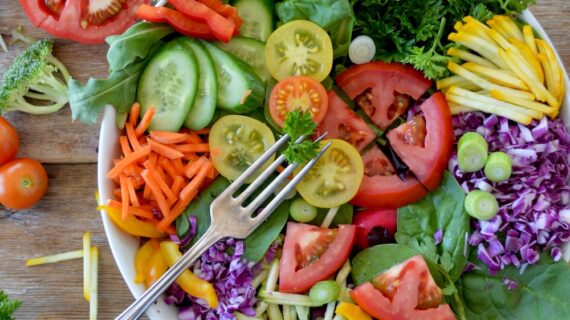
Solid advice about solid foods: Details on baby feeding from Pittsburgh experts
Photo above by Phong Duong via Unsplash.
Introducing solid food can be one of the most joyful highlights – or challenging struggles – in a baby’s first year. As you approach the experience of feeding a baby solid food, it helps to know the latest guidelines and recommendations. This current information is especially valuable for grandparents and older caregivers, who may not have fed an infant in a generation.
When we start to introduce food, generally at four to six months, the majority of baby’s nutrition has been coming from either formula or breast milk, says Dr. Joe Aracri, pediatrician and chair of the Allegheny Health Network’s Pediatric Institute. “At six months we really start to advance their diet, take them up to three meals a day; we’ll introduce a little more proteins and meat.”
One new food a day
Once baby can effectively move some single grain infant cereal around in their mouth and swallow – with no tongue thrusting or crying – it’s time to start eating, Dr. Aracri says.
And it’s not necessary to wait three to five days before adding something new to baby’s menu. We can now add a single ingredient food each day, says Sharon Strohm, manager of clinical nutrition at UPMC Children’s Hospital of Pittsburgh.
“You just don’t want to add sodium or sugar to it,” she says.
First solid foods need not be the traditional oatmeal with slowly-added mashed fruits and veggies that so many of us started on, comments Strohm. It can be a pureed meat, if that’s part of the family’s diet.
“In different cultures, they may add cumin or some cinnamon, and that’s all appropriate,” Strohm says. “As long as it’s all a single ingredient.”

Variety is key
Introduce a variety of whatever the family enjoys eating, says Strohm. For example, lentils can be cooked down and mashed to prevent choking. Once the child begins to self-feed, just make sure that it’s very tender and moist.
Also, Aracri says, keep expanding meal options beyond the first year. Be mindful that once children are out of the infant “high growth velocity range” and into toddlerhood, the amounts they eat may become inconsistent.
Don’t delay peanut butter
If your family has a history of food allergies, talk to your pediatrician first before serving your baby any allergenic foods like peanuts, eggs, wheat or fish. Otherwise, research has shown that there is no point in delaying these foods — even for babies as young as four months.
In fact, says Aracri, “what we’ve found is that earlier introduction of these foods decreases food allergies.”
What about portion sizes?
Watch baby’s cue. Do they turn their head or seem disinterested as you try to feed them? If so, the meal is probably over.
Along with pureed foods, the trend now is “baby-led weaning” — providing soft, finger-sized versions of adult foods once the child is able to sit up (usually around seven to eight months) and self-feed.
“It’s what we’ve been doing forever,” Aracri says. “It’s really good for language development and fine motor development that all comes along with eating.”
Make sure food is sliced lengthwise and vegetables are steamed for baby to hold and gnaw on, Strohm advises. A peeled, seed-removed avocado is great for this. And don’t worry if there is more squished banana on the tray than in baby’s belly.
“It’s all about learning and (experiencing) texture,” Strohm says.
Another option: Put purees on the tray and let baby get messy. They may – or may not – even bring some of it to their mouth. Just let them engage with the food and not be afraid of getting it on their face to avoid later “funny feelings” or aversions to food.
A couple of items to avoid
- Food “pouches” that go directly into the child’s mouth can hinder developing fine motor skills of the tongue and mouth and even create later language problems, Aracri says.
- The added calories of fruit juices provide little nutritional benefits and also zap appetites, Strohm says. Although, some pediatricians will suggest using a little prune or white pear juice to help with constipation, she adds.
- No diet yogurts. If giving adult yogurt, it should be whole milk (full-fat).
- Hard-to-grind, stringy celery should be avoided as a first food, Dr. Acacri says.
And that first birthday cake? Dive into that thing, and have a good time, Dr. Acacri says.
“There are ‘always foods,’ ‘sometimes foods’ and ‘special occasion foods.’” he says.
Additional resources
There is a lot of good information available about feeding babies, including the materials listed below. As you do research online, just be cautious about trusting information from for-profit websites which may be designed to sell products.
- USDA Feeding Infants Guide
- The Centers for Disease Control and Prevention: Infant and Toddler Nutrition
- “Caring for Your Baby and Young Child: Birth to Age 5” (7th Edition), by the American Academy of Pediatrics; Tanya Remer Altmann, MD, FAAP; David L. Hill
- Bright Futures at Georgetown University










